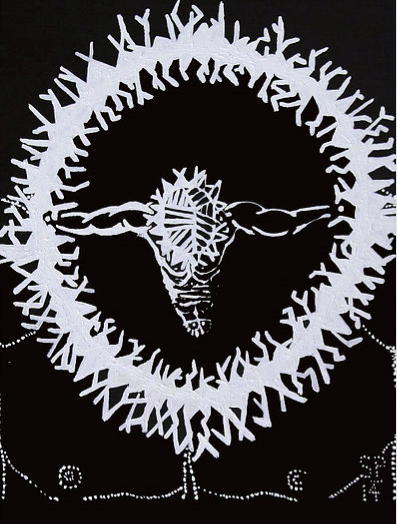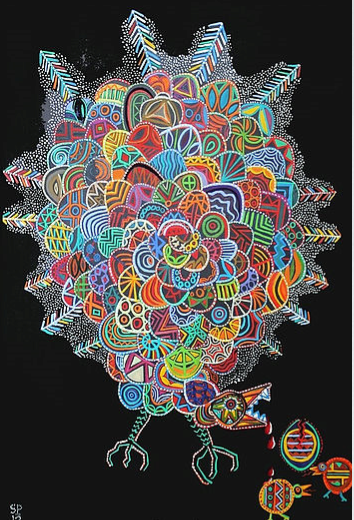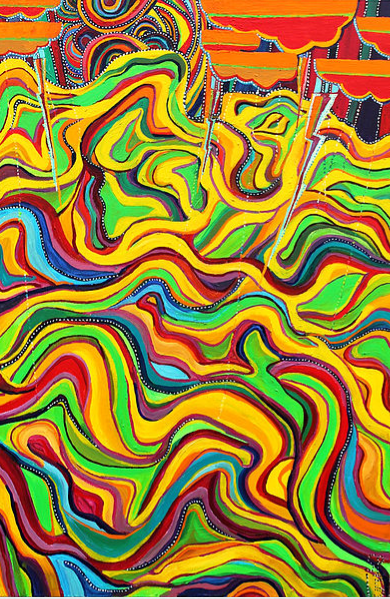|
Friday 15th June was a perfect day to be out and about – the sun shone and the temperature hovered around 20° for most of the day. I set out for the coast and had an agreeable walk along the Bognor Regis sea front. But the sea air was not the main purpose of my outing – the real reason for visiting West Sussex lay at my next stop, in Chichester, where Stephen Hornsby-Smith’s latest exhibition ‘To Lock Horns’ was taking place.
0 Comments
For someone with only the merest appreciation of art, occasions to chat with and ask questions of an artist are few and far between. When I asked St. Pius parishioner Stephen Hornsby-Smith recently whether he would like to write an article about his art for St Pius InPrint, he simply directed me to his excellent website (1), of which I was previously unaware. Having looked at some of Stephen’s work there I recognised at once a strong visual appeal, but felt inadequate to the task of understanding what I was looking at. I wrote to Stephen to register my appreciation and admit my ignorance. In his reply, he kindly offered to discuss some of his work with me after Sunday Mass. I wondered whether we might look at a few paintings and search for significance and hidden meaning amongst the vivid flowing streams and contortions of colour. If I am honest, I feared being immediately lost in artistic explanations on a plane far above the mundane world I seem to inhabit. Instead, Stephen showed me a YouTube video lasting about 17 minutes, in which his work speaks for itself, and is accompanied by a sound track of lively music, and commentaries by himself and Andre Figueiredo. I was fortunate enough to have Stephen’s own commentary too. What did I learn? I learned that Stephen’s work reflects stages and locations in his life, and his observation of world events; that he has been influenced by Picasso and the concept of naïve art; that his work expresses concern for, and acute observation of, the natural world; that the seemingly insignificant detail in his paintings can express the challenge or harshness that Stephen wishes to convey; that just when you think you cannot be further surprised by Stephen’s art, he comes up with another piece which starts the process all over again. I also learned that one does not need to be an art guru to appreciate the humanity expressed in some of Stephen’s work – notably for me in his stirring depictions of the 9/11 and 7/7 tragedies. At least I thought I was making progress towards some understanding, until I watched a second video, which ends with the caption “How can you contain distortion and beauty, abstraction and the figurative, natural and the industrial? Find a way.” I think I need another chat with Stephen…
[Stephen later explained this was a reference to the unsympathetic attitude of Ted Hughes to his troubled wife, Sylvia Plath. He also links the ‘find a way’ reference to what he calls his “ambivalent” relationship with art.] I thoroughly recommend a visit to one or more of these:
ART EXHIBITION BY STEPHEN P. HORNSBY-SMITH (PAINTER), CRANLEIGH ARTS CENTRE, 2-26 OCTOBER 201326/11/2016 By Gillian Elsom Be prepared to be moved by Stephen’s paintings, there is vibrant colour, fierce and beautiful wild animals, repeating patterns, or motifs, on a black background, which come back in each painting to unify the whole collection. The motifs have been influenced by Stephen’s study of Global Art and in Stephen’s words are a mixture of ‘naïve form and calculated ideas’, using ‘elaborate design’ and ‘simple techniques’.
Stephen says ‘I paint naïve, colourful and semi-abstract paintings. Increasingly I’ve painted people as animals from wildlife, their surroundings and experiences… For me painting is bittersweet and free, like the ‘wildlife’ I paint, dangerous when cornered.’ From a wild cat, gorilla, elephant, tiger, peacock or snake, to a spider with a butterfly trapped in its web, these animals are dangerous when cornered but have their own wild beauty; it is left to our imagination as to whom they could represent, maybe characteristics in us all? In his four paintings of the seasons ‘Spring’, ‘ Summer’, ‘Autumn’ and ‘Winter’: ‘Spring’ is a painting of bright, fresh colours, ‘Summer’ too has its own feel, while ‘Autumn’ moves towards warmer Autumnal hues and the cold of ‘Winter’ is painted with white motifs on a black background. The colourful motifs have been used to create a unique and beautiful New Zealand wool ‘Contemporary Carpet’, hand woven in India. Although the sign said ‘do not touch’ the first thing the carpet makes you want to do is touch it, as you can feel the design from the raised pile. The motifs have also been painted onto his own papier mâché animals and recycled animal figurines. There is something for everyone to appreciate in Stephen’s paintings: from a train hidden in the design, the suggestion of cypress trees in his ‘Travelling Through France’, to a huge snake (painted in black motifs on a gold background), becoming even more menacing as it slides onto the painting, so large it will only partly fit; they are fun and serious, in his words ‘harmonious but unsettling’. Stephen is a parishioner of St Pius X Church, Merrow, Guildford. To find out more about his work see www.stephenhornsby-smith.com |
Archives
January 2024
Categories
All
|
©
2021 | Queries or Suggestions Contact the Webmaster, Terms of Use, ChurchSuite













 RSS Feed
RSS Feed